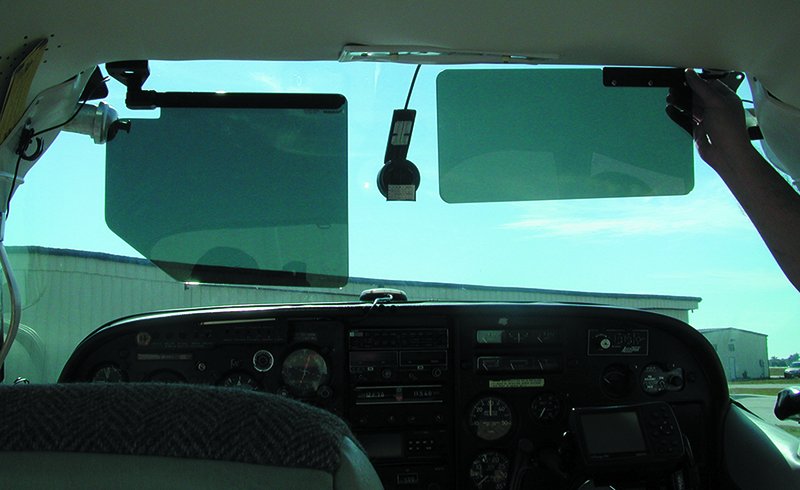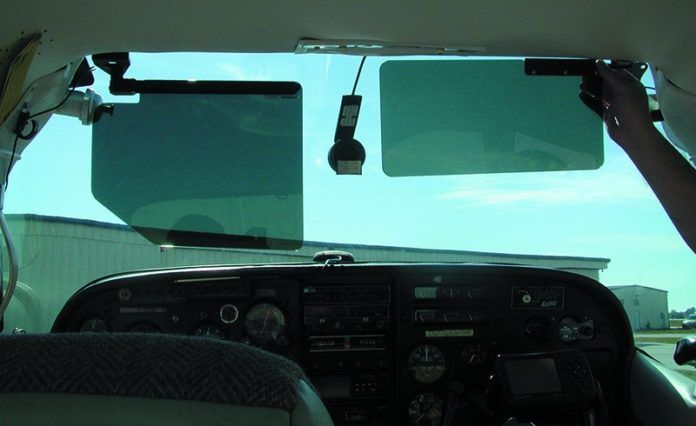Sun Visor Feedback
I read with a great deal of interest your article on aftermarket visors in the February 2016 issue of Aviation Consumer.
I’ve been a fan of Rosen visors, and for every aircraft I’ve purchased, I’ve changed out the factory visors for the Rosen products.

There’s one anomaly for these visors and it may also be true for some of their competitors. The corner edges of the visors offer no protection against accidentally making contact with the inside of the windscreen while positioning the visor. One of my aircraft (in a flying club) had a nice symmetrical arc embedded into the windscreen from a careless moment by one of the pilots. I raised this issue with Rosen a few years back and my concern seemed to be dismissed.
Some type of corner protector on the visor would completely eliminate this risk of trashing a windscreen.
Additionally, in another one of the clubs I belonged to, a pilot left the aircraft uncovered on a warm sunny day. The aircraft was completely locked and unventilated. The interior heat must have been fairly high as both Rosen visors sagged down from their stowed horizontal position. So precautions about high-heat environments should be stated to alert the aircraft owner of the issue.
Rosen wouldn’t help support the replacement visor plastics and we had to do it at full cost.
Nevertheless, I’m generally happy with the products I’ve purchased from Rosen.
Tom Engleman
Nevada City, California
Electronic Attitude Gyros for Backup
Larry Anglisano’s commentary on the ridiculous regulatory snag that’s unraveling with the idea of using electronic attitude gyros for backup (February 2016 issue of Aviation Consumer) is spot on. I am one of those buyers he mentioned who tried to have an L-3 unit installed to back up the OEM glass in our company’s early-generation Cirrus, but after a month of dealing with its FSDO, my shop is ready to give up.
The problem it is running into relates to the way the original type certificate is written and specifically, the equipment list, which calls out for the three backup round-gauge instruments in the subpanel. The shop was told a field approval would likely have to be reviewed on a level higher than the FSDO, which could take forever.
We even considered the Sandia SAI-340 instrument, but there is also the concern about the single-point failure of the pitot source input. Any idea what’s being done to make this technology available for backup?
Ernie Clark
via email
Sandia Aerospace’s Barry LeBlanc offers the following update: Our largest customer base—owners of round-gauge instrument panels—can have the SAI-340 installed as a primary attitude instrument and signed off as a minor alteration with a logbook entry.
For field approvals in applications supplementing an Aspen EFD1000 primary flight display, shops have been questioned about the SAI-340’s attitude aiding (via pitot input). The instrument utilizes air-data input to help refine the attitude solution during specific operational maneuvers. The SAI-340 is certified to support a degraded mode to address its operation where air-data aiding has been lost. If the external air-data source becomes unavailable (plugged pitot static port, or similar fault), the unit will enter the Degraded Mode automatically. Operation in this Degraded Mode does not imply that attitude availability from the SAI-340 has been lost. During this Degraded Mode, attitude information is always available to the pilot—it is never removed or made unavailable.
For interfaces that include the Garmin G500/600 PFD as primary, FAA field approval will also be required, perhaps until Garmin recognizes the SAI-340 in its STC. There are now a dozen or more signed field approvals from the Philadelphia, Pennsylvania, Minneapolis, Minnesota, Seattle, Washington and Juneau, Alaska, FAA FSDOs.
We are still baffled as to why one FSDO accepts the retrofit, while another rejects it—including one that required a flight test. During the SAI-340 TSO process, we logged more than 40 hours of documented (video) flight testing, which is on file with the Fort Worth, Texas, ACO.
I think there needs to be more FAA internal education on how a TSO is applied for and issued. Still, I believe there are a lot of well-educated FAA Avionics inspectors that have worked their way from the hangar to their present position. These are the inspectors that have a grip on FSDO-level field approvals and should be sourced for electronic attitude instrument approvals whenever possible.
Zaon Traffic Unit
I’m looking to upgrade the software in my Zaon XRX portable traffic receiver. Is there anyone who can help?
Bruce McGree
via email
Zaon left the industry abruptly, leaving plenty of systems in the field needing support. Any engineers up to the task?





